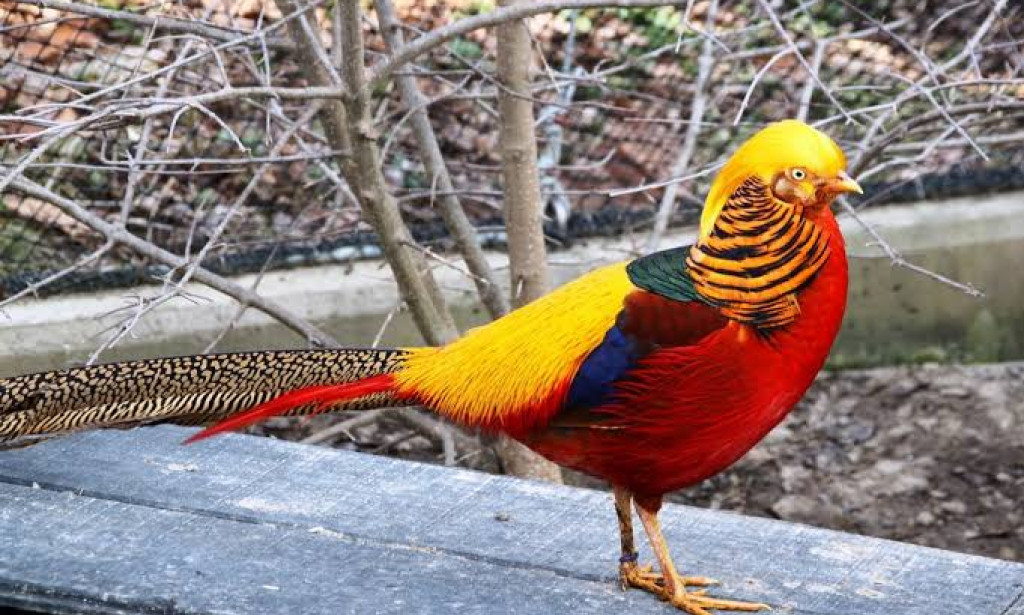1. South Philippine Dwarf Kingfisher (Ceyx melanurus)
Without precedent for 130 years, this Philippine-based bird has been spotted and unexpectedly - shot and presented to the world!
Perhaps the most unusual flyer, this adorable minor species figured out how to avoid us starting around 1890. The South Philippine bantam kingfisher has an amazingly hued plumage with a kaleidoscope of metallic lilac, orange, and bright blue spots. They breed and perch in tropical or subtropical living spaces such as wet marsh backwoods.
2. Stresemann's Bristlefront (Merulaxis Stresemanni)
The Stresemann's Bristlefront is perhaps the most uncommon bird on the planet - so unusual that there is just a single left.
Scientists thought everything was lost until, in December 2018 in Brazil, one Bristlefront was spotted. You would figure this would have brought trust for the species; however, tragically, because of the deficiency of the vast majority of their environment in the Atlantic woodlands of the Americas, the possibilities are fragile.
The Atlantic Forest has been decreased to under 8% of what it was, and thus, numerous species have become wiped out.
3. New Zealand Rock Wren (Xenicus Gilviventris)
As one hears the name, the New Zealand rock wren is endemic toward the South Island of New Zealand. Its Māori name, pīwauwau, signifies "minimal griping bird" and mātuitui, which means "jerk," after its bouncing movement.
The New Zealand rock wren isn't the best flyer; it can scarcely oversee more than 7 feet off the ground or distances of more than 100 feet! They bounce and run extraordinarily as they weave their heads and flick their wings.
4. Rufous-headed Hornbill (Rhabdotorrhinus Waldeni)
Local to the Philippines, the Rufous-headed Hornbill is one of the most jeopardized of its species. They sport a hard 'casque' which stands out from the highest point of their wrinkly red-orangey bills. The bill might appear to be solid; however, it is very slight with empty bone cells.
Rufous-headed Hornbills have an intriguing method of ensuring their little ones: both mom and father use salivation and mud to fabricate a divider across the entry to a tree hole, basically fixing the female and eggs inside.
They leave a tiny opening at the top through which the male can pass food. Also, assuming that isn't sufficient, the guardians are very regional while safeguarding the home.
5. Kakapo (Strigops Habroptilus)
The kakapo is nighttime, flightless parrot endemic to New Zealand with no direct relations by any stretch of the imagination! This odd-looking yet sweet bird is imperiled.
Kakapos are mavericks who never leave their domain however remain in a similar reach for the vast majority of their life. They snack seeds, plants, and different organic products starting from the earliest stage to move high into trees.
They like to jump from trees and fold their flightless wings; however, they deal with a hilarious yet controlled fall in the best-case scenario.
6. Blue-eyed Ground-dove (Columbina Cyanopis)
These lovelies are the most extraordinary and imperiled birds on the planet, found in the Cerrado locale of Brazil. They were believed to be wiped out for a very long time until 12 of these species were cheerfully rediscovered in 2015!
Ornithologist Rafael Bessa heard a strange bird call, recorded it, and when he played it back, found that it was the Blue-peered toward Ground-Dove. Amazingly, joyful amazement, they were not terminated.
7. Imperial Amazon (Amazona Imperialis)
The Dominican Republic's Imperial Amazon, privately known as the sisserou, is endemic to this Caribbean island and is its public bird.
The species is fundamentally imperiled. In 2019, it was assessed there were around 50 mature people left in the wild, down from a past count of hundreds.
The justification for this was twofold: a genuine loss of familiar natural surroundings and Hurricane Maria to compound the situation.
8. New Caledonian Owlet-nightjar (Aegotheles Savesi)
Otherwise called the "cryptic Owlet-Nightjar," this is one of the most baffling of the relative multitude of unique cases on the rundown. More significant than the Australian Owlet-Nightjar, it was second in size to the New Zealand Owlet-Nightjar, which is currently wiped out.
Back in 1880, just two New Caledonian Owlet-Nightjars were gathered. One of them was found as he flew into a room in Tonghoué, a little town in New Caledonia. By 1915 without a doubt, not many were spotted, and analysts accept that their numbers haven't risen.
9. Cebu Flowerpecker (Dicaeum Quadricolor)
Found uniquely in the Cebu Islands in the Philippines, these birds were believed to be terminated because of the vanishing of their natural surroundings. In any case, in 1992, they sprung up again in a bit of limestone woods in the Central Cebu Protected Landscape.
Their name, Quadricolor, alludes to the four shades of the male's plumage: blue, red, white, and yellow. Cebu Flowerpeckers are frugivorous, which implies they eat just leafy foods.
10. Golden Pheasant (Chrysolophus Pictus)
You may have seen these birds at the zoo, yet those are half breeds.
The genuine brilliant birds are local toward the Western woods of China. Named after their sharp peaks, we are wowed by the male's beautiful body! They can grow up to 41 inches long, and the tail is 2/3 the length of the whole body.
Brilliant fowls are truly difficult to come by, and it is semi-secret with regards to them as they are only sometimes found right at home.


You must be logged in to post a comment.